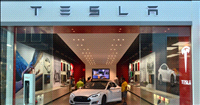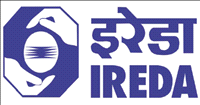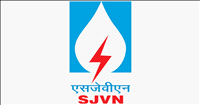Human development, poverty and unemployment
27 Feb 2007
1.44 Efforts towards social sector development continued to focus on the key areas of human development and creation of social infrastructure. NCMP mandated flagship programmes of Government witnessed large increases in outlays. These programmes included the National Rural Employment Guarantee Scheme, Total Sanitation Campaign, National Rural Health Mission, Sarva Shiksha Abhiyan (SSA), Mid-day Meal, Integrated Child Development Services (ICDS), Jawaharlal Nehru National Urban Renewal Mission and the Rajiv Gandhi National Drinking Water Mission. Apart from extending their coverage, implementation continued to focus on the difficult task of improving their access, delivery and quality of the social services.
1.45 The importance of the recent efforts at improving social infrastructure assumes significance in view of India’s relative rank of 126 (among 177) in 2004, only one position higher than in 2003, in the UNDP’s global Human Development Report for 2006. National Family Health Survey III has pointed out widespread under-nutrition among women and children which needs to be addressed urgently by the National Rural Health Mission. Independent surveys on elementary education in the country have also pointed out the impossibility of achieving universal elementary education by the target date of 2007 and the low levels of achievement of the children passing out of the school system. SSA needs to garner greater efforts to focus attention on the achievement of quality education at the elementary level.
1.46 The results of the NSSO’s 61st Round large-scale quinquennial survey on employment and unemployment conducted during 2004-05 throws a lot of light on the heated debate on jobless growth under reforms. The survey results show how the annual growth rate of employment, which had declined from 2.1 per cent during 1983-1994 to 1.6 per cent during 1993-2000, went up to 2.5 per cent during 1999-2005. While employment has grown faster than before, with the demographic dynamics and higher labour force participation, rate of unemployment (as measured by ‘usual principal status’) also went up marginally from 2.8 per cent to 3.1 per cent during 1999-2000 to 2004-05. While detailed analysis of the results of the survey is yet to be carried out, slowing down of the growth of agriculture could be one of the main reasons for the growth in the unemployment rate. Furthermore, the worrisome marginal decline in employment in the organised sector between 1994 and 2004, according to the Annual Survey of Industry data, has raised some disturbing issues about optimal regulation and incentives.
1.47 Based on the data on NSSO’s 61st round large scale sample survey on household consumer expenditure for the year 2004-05, it may be concluded that the incidence of poverty came down to about 22 per cent in 2004-05 from a level of 26.1 per cent in 1999-2000 in terms of the mixed recall period (data for five non-food items, namely clothing, footwear, durable goods, education and institutional medical expenses are collected from a 365-day recall period and the consumption data for the remaining items are collected from a 30 day recall period). Meeting the Tenth Five Year Plan’s targeted reduction of five percentage points in the poverty ratio requires about a 1 percentage point further decline in the ratio in 2005-07.
1.48 India will continue to benefit from the ‘demographic dividend’ until 2045. India is likely to achieve a Total Fertility Rate (which is the average number of children a woman produces during her life time) of 2.1, which is the replacement level of fertility, in the decade beginning 2010. With a high proportion of the population in the reproductive age group, the total population, however, will continue to grow for another 25-35 years before stabilizing around 2045. Experience of developed countries suggest that it takes around 35 years for population to stabilize after achieving the replacement rate; it is only after 35 years that one generation replaces another.
Featured articles

Lighter than air, yet very, very powerful
By Kiron Kasbekar | 03 Jan 2024
In March 2013 Chinese scientists pulled off a remarkable feat. They created the world’s lightest aerogel. Tipping the scales at a mere 0.16 milligrams per cubic centimeter – that’s a sixth of the weight of air!

COP28 explained: A closer look at COP28's climate change solutions
By Aniket Gupta | 27 Dec 2023
The 28th United Nations Climate Change Conference, also known as COP28, took place from 30th November 2023, to 13th December 2023, at Expo City in Dubai, United Arab Emirates.

What is a Ponzi scheme?
By Aniket Gupta | 06 Dec 2023
Ponzi schemes have long captivated the public imagination, drawing unsuspecting investors into a web of illusion and deception.

The Rise and Rise of HDFC Bank
03 Jul 2023
HDFC, which surged ahead of global majors like HSBC Holdings Plc and Citigroup Inc and left Indian peers like State Bank of India and ICICI Bank in market capitalisation, now ranks fourth largest among the world’s most valuable banks, after JPMorgan Chase & Co, Industrial and Commercial Bank of China Ltd and Bank of America Corp

India’s Millet Revolution To Enrich Global Food Basket
02 Apr 2023
Millets, a healthier and cheaper substitute to wheat and rice, are indigenous to many parts of the world, especially in the semiarid tropics of Asia and Africa, and offers a big scope for expanding production and consumption in the foodgrain deficient African continent

Market predator Hindenburg preys on Adani stock
06 Mar 2023
Almost a month after the damning report of short-seller Hindenburg Research on the Adani Group that claimed that the seven stocks within the group were about 85 per cent overvalued, one of the group's stocks, Adani Total Gas, closed at Rs835 on the BSE, down nearly 79 per cent from its 24 January level, almost close to reaching that valuation
Business History Videos

History of hovercraft Part 3...
By Kiron Kasbekar | Presenter: Kiron Kasbekar

History of hovercraft Part 2...
By Kiron Kasbekar | Presenter: Kiron Kasbekar

History of Hovercraft Part 1...
By Kiron Kasbekar | Presenter: Kiron Kasbekar





















